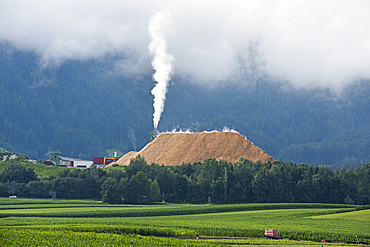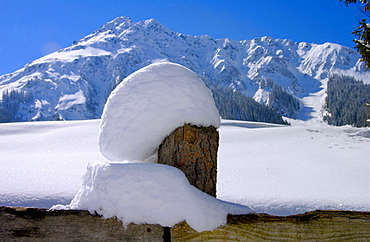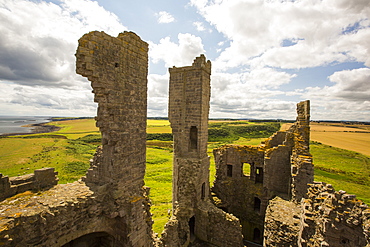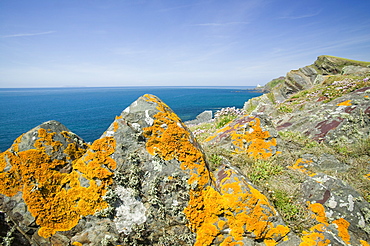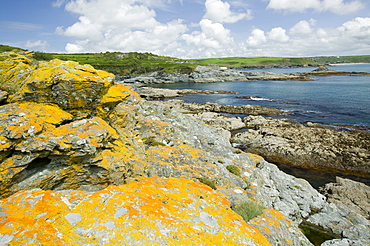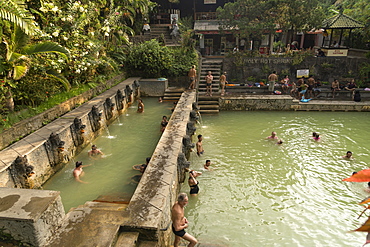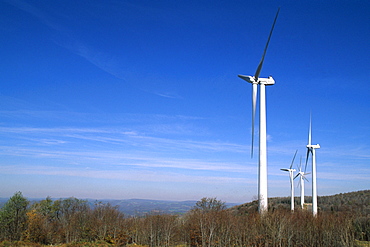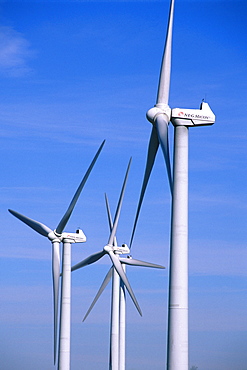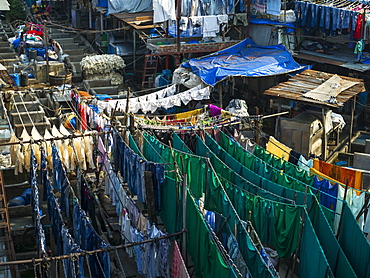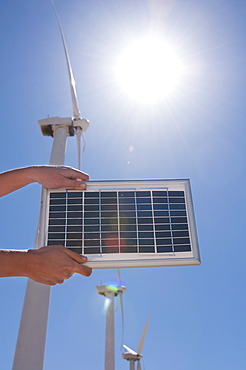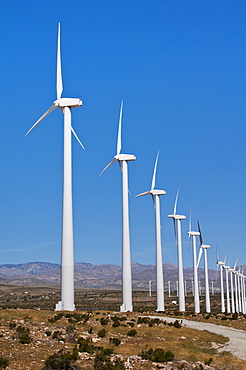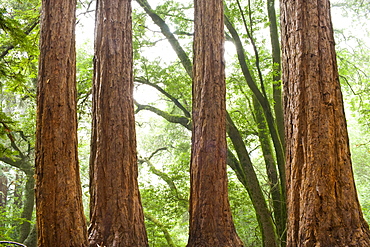Results
12 results found
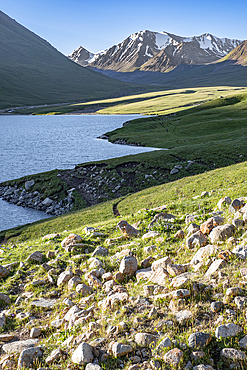
Kol-Ukok Mountain Lake at sunrise surrounded by green mountains under a blue sky, Kyrgyzstan, Central Asia, Asia
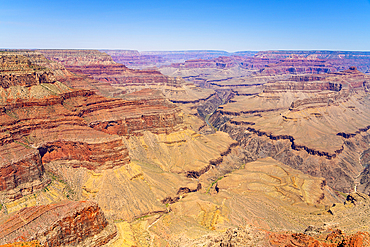
Grand Canyon, Pima Point, Grand Canyon National Park, UNESCO World Heritage Site, Arizona, United States of America, North America

Waves crashing against the shore in Cross Sound, Southeast Alaska, United States of America, North America
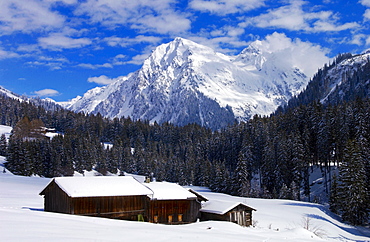
Farmhouse and barn at Klosters - Amongst the Silvretta group of the Swiss Alps. Road to Silvretta.Mountain at right is P.Linard 3411 metres high
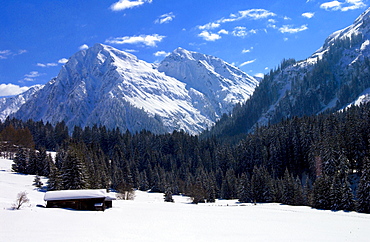
Snow covered barns in the meadows below the Alps at Klosters - Amongst the Silvretta group of the Swiss Alps. Road to Silvretta.Mountain at right is P.Linard 3411 metres high
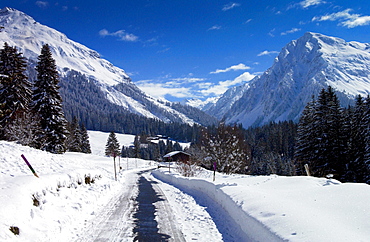
Klosters - Amongst the Silvretta group of the Swiss Alps. Road to Silvretta.Mountain at right is P.Linard 3411 metres high
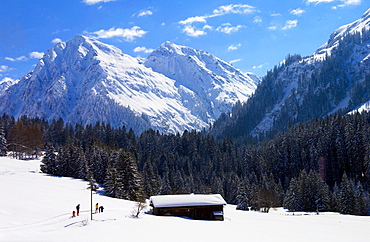
Snow covered barns in the meadows below the Alps at Klosters - Amongst the Silvretta group of the Swiss Alps. Road to Silvretta.Mountain at right is P.Linard 3411 metres high
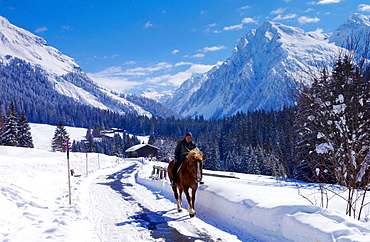
Man riding his home home at Klosters - Amongst the Silvretta group of the Swiss Alps. Road to Silvretta.Mountain at right is P.Linard 3411 metres high
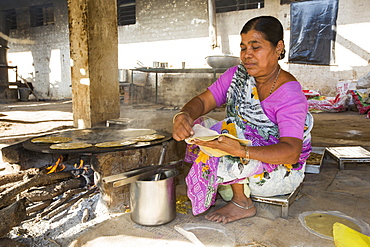
The Muni Seva Ashram in Goraj, near Vadodara, India, is a tranquil haven of humanitarian care. The Ashram is hugely sustainable, next year it will be completely carbon neutral. Its first solar panels were installed in 1984, long before climate change was on anyones agenda. Their energy is provided from solar panels, and wood grown on the estate. Waste food and animal manure is turned inot biogas to run the estates cars and also used for cooking. Solar cookers are also used, and the air conditioning for the hospital is solar run. 70 % of the food used is grown on the estate. They provide an orphanage, schools for all ages, vocational training, care for the elderly, a specialist cancer hospital withstate of the art machinary, and even have a solar crematorium. This shot shows a cook preparing chapatis on a biofuel stove.
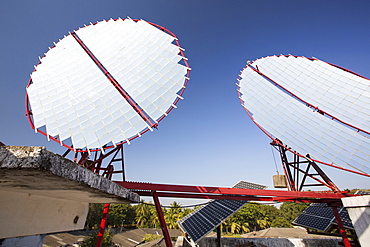
The Muni Seva Ashram in Goraj, near Vadodara, India, is a tranquil haven of humanitarian care. The Ashram is hugely sustainable, next year it will be completely carbon neutral. Its first solar panels were installed in 1984, long before climate change was on anyones agenda. Their energy is provided from solar panels, and wood grown on the estate. Waste food and animal manure is turned inot biogas to run the estates cars and also used for cooking. Solar cookers are also used, and the air conditioning for the hospital is solar run. 70 % of the food used is grown on the estate. They provide an orphanage, schools for all ages, vocational training, care for the elderly, a specialist cancer hospital withstate of the art machinary, and even have a solar crematorium. This shot shows solar panels that focus the suns rays on heat exchangers to boil oil, which is then sent down to the kitchens below to heat the cookers.
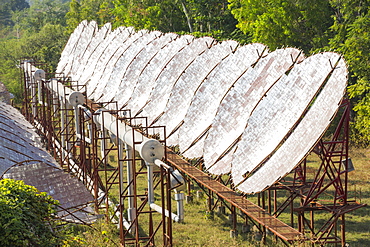
The Muni Seva Ashram in Goraj, near Vadodara, India, is a tranquil haven of humanitarian care. The Ashram is hugely sustainable, next year it will be completely carbon neutral. Its first solar panels were installed in 1984, long before climate change was on anyones agenda. Their energy is provided from solar panels, and wood grown on the estate. Waste food and animal manure is turned inot biogas to run the estates cars and also used for cooking. Solar cookers are also used, and the air conditioning for the hospital is solar run. 70 % of the food used is grown on the estate. They provide an orphanage, schools for all ages, vocational training, care for the elderly, a specialist cancer hospital withstate of the art machinary, and even have a solar crematorium. This shot shows the solar air conditioning for the Ashram's hospital.
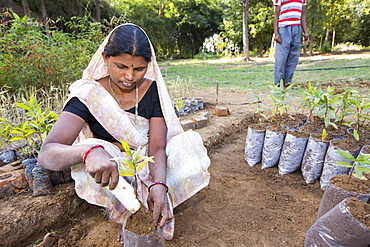
The Muni Seva Ashram in Goraj, near Vadodara, India, is a tranquil haven of humanitarian care. The Ashram is hugely sustainable, next year it will be completely carbon neutral. Its first solar panels were installed in 1984, long before climate change was on anyones agenda. Their energy is provided from solar panels, and wood grown on the estate. Waste food and animal manure is turned inot biogas to run the estates cars and also used for cooking. Solar cookers are also used, and the air conditioning for the hospital is solar run. 70 % of the food used is grown on the estate. They provide an orphanage, schools for all ages, vocational training, care for the elderly, a specialist cancer hospital withstate of the art machinary, and even have a solar crematorium. This shot shows a woman planting trees for onward growth in the Ashrams forests.

The Muni Seva Ashram in Goraj, near Vadodara, India, is a tranquil haven of humanitarian care. The Ashram is hugely sustainable, next year it will be completely carbon neutral. Its first solar panels were installed in 1984, long before climate change was on anyones agenda. Their energy is provided from solar panels, and wood grown on the estate. Waste food and animal manure is turned inot biogas to run the estates cars and also used for cooking. Solar cookers are also used, and the air conditioning for the hospital is solar run. 70 % of the food used is grown on the estate. They provide an orphanage, schools for all ages, vocational training, care for the elderly, a specialist cancer hospital withstate of the art machinary, and even have a solar crematorium. This shot shows the girls school.
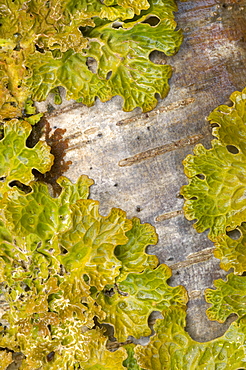
Tree lungwort (Lobaria pulmonaria) growing on Hazel (Corylus avellana) Lungwort is an indicator of air pollution as it only grows in clean air. Sutherland, Scotland
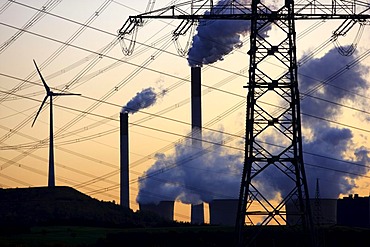
High voltage power lines, wind turbine, Halde Scholven, mine heap, next to the Scholven coal-fired power plant operated by E.ON, Gelsenkirchen, North Rhine-Westphalia, Germany, Europe

High voltage power lines on Halde Scholven, mine heap, next to the Scholven coal-fired power plant operated by E.ON, Gelsenkirchen, North Rhine-Westphalia, Germany, Europe
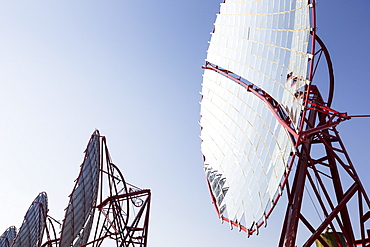
The Muni Seva Ashram in Goraj, near Vadodara, India, is a tranquil haven of humanitarian care. The Ashram is hugely sustainable, next year it will be completely carbon neutral. Its first solar panels were installed in 1984, long before climate change was on anyones agenda. Their energy is provided from solar panels, and wood grown on the estate. Waste food and animal manure is turned inot biogas to run the estates cars and also used for cooking. Solar cookers are also used, and the air conditioning for the hospital is solar run. 70 % of the food used is grown on the estate. They provide an orphanage, schools for all ages, vocational training, care for the elderly, a specialist cancer hospital withstate of the art machinary, and even have a solar crematorium. This shot shows solar panels that focus the suns rays on heat exchangers to boil oil, which is then sent down to the kitchens below to heat the cookers.

Windmills used to generate electrical power at Cowley Ridge in southern Alberta, Canada. (silhouette)
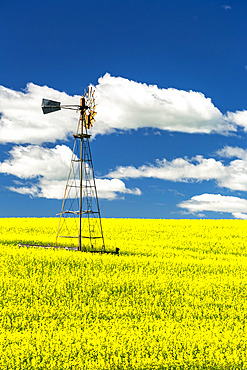
Flowering canola field with an old wind mill tower in the middle, with a blue sky and white, puffy clouds; North of Three Hills, Alberta, Canada
